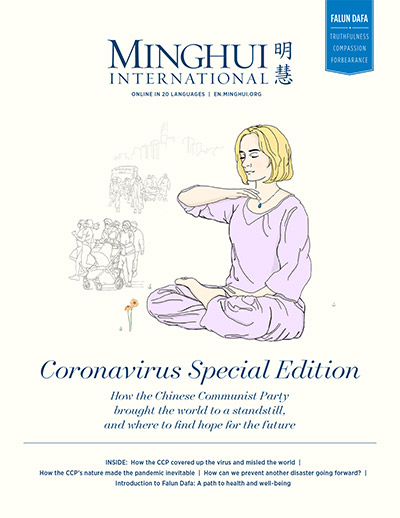(Minghui.org) (This article was originally published in Chinese on August 1, 2003.)
At 2:41 p.m. on January 23, 2001, a shocking self-immolation incident took place at Tiananmen Square in Beijing. The Chinese Communist Party’s mouthpiece Xinhua News Agency and CCTV immediately reported on the event, claiming that the five self-immolators and two others who had attempted to burn themselves were Falun Gong practitioners. But Falun Gong practitioners denied the allegation, as it violates Falun Gong’s prohibitions on killing and suicide.
Some Western media outlets and third-party agencies raised questions about the authenticity of the event. A Washington Post reporter interviewed the neighbors of Liu Chunling, one of the self-immolators. Liu’s neighbors said that she worked at a night club, that she treated her mother and daughter very badly, and that they had never seen her practicing Falun Gong.
The World Organization to Investigate the Persecution of Falun Gong established a committee to investigate the incident. Below are three of their findings.
Liu Chunling Fell After Being Hit by a Heavy Object
From the footage broadcast by CCTV’s Focal Point program, a man wearing a military coat forcefully hit Liu Chunling’s head with a baton-shaped object, and then she fell to the ground. She was also seen to cover the left side of her head with her hands. It’s likely she died from the hit, not from self-immolation. Then the question becomes: who is the man, and why did he hit Liu with the object?
Who Is Responsible for Liu Siying’s Death?
Liu Chunling’s daughter, 12-year-old Liu Siying, was among the five self-immolators. All of them were treated at the Jishuitan Hospital in Beijing, which specialized in treating burns and related injuries.
One of the hospital staff members told an investigator, “Liu Siying had almost recovered from the burns. It’s suspicious that she suddenly died right before she was about to be discharged.”
According to the investigation committee, Liu Siying’s myocardial enzyme spectrum and other examinations were in the normal range on March 16. As the heart is usually one of the most-affected organs from severe burns, myocardial enzyme spectrum has been used as an indicator for diagnosing myocardial damage.
Between 8 and 9 a.m. on March 17, a director of the hospital and the director of the Beijing Municipal Medical Administration Department visited Liu in the sickroom and talked to her for a long time. Then between 11 and 12 a.m., Liu suddenly fell into critical condition and died shortly after. What’s the real cause of her death?
Self-Immolators Not Taken to the Hospital Until Two Hours After the Incident
According to a report by the Xinhua News Agency on January 30, 2001, on the northeast side of the Monument to the People’s Heroes on Tiananmen Square, Wang Jindong first lit himself on fire at 2:41 p.m. on January 23, 2001. “In less than one minute, several police officers put out the fire with four fire extinguishers and quickly took him to the hospital for treatment in a police car. A few minutes later, four females who were not far from Wang also lit the gasoline on themselves. After only one minute and a half, the fire was put out as well.”
“In less than seven minutes after the incident took place, three ambulances from Beijing Emergency Center arrived and took the injured individuals to the Jishuitan Hospital, the best hospital in Beijing, to treat burns.”
Given the fact that the police swiftly put out the fire and the ambulances arrived in time, the self-immolators should have arrived at the hospital at around 3 p.m, as the hospital is less than 5 miles from Tiananmen Square and the trip usually took about 20 minutes given local traffic.
But according to information provided by several hospital workers, the self-immolators weren’t taken there until after 5 p.m. The Xinhua News Agency didn’t provide any explanation of what caused the delay or what happened in the two-hour window.
Copyright © 2024 Minghui.org. All rights reserved.










